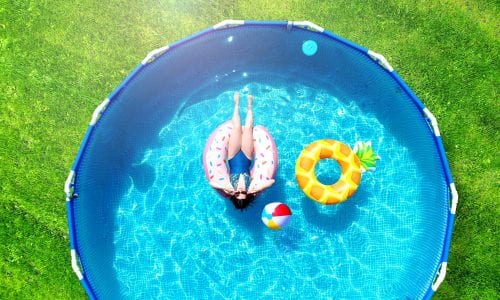The Best Type D Pool Filter Cartridge

Our Review Process
Don't Waste Your Money is focused on helping you make the best purchasing decision. Our team of experts spends hundreds of hours analyzing, testing, and researching products so you don't have to. Learn more.
Our Picks For The Top Type D Pool Filter Cartridges
- 1. SUNSET FILTERS Above Ground Type D Pool Filter Cartridge, 6 Pack
- 2. Future Way Above Ground Type D Pool Filter Cartridge, 6 Pack
- 3. Summer Waves Heavy Duty Type D Pool Filter Cartridge, 4 Pack
- 4. Macaberry Type D Pool Filter Cartridge, 12 Pack
- 5. Guardian Filtration Type D Pool Filter Cartridge, 2 Pack
- 6. POOLPURE Type D Pool Filter Cartridge, 2 Pack
- 7. JUWO Type D Pool Filter Cartridge, 6 Pack
- 8. Summer Breeze Type D Pool Filter Cartridge, 2 Pack
- 9. SGQCAR Type D Pool Filter Cartridge, 2 Pack
- 10. MIJU Type D Pool Filter Cartridge, 4 Pack
You’ll get six replacement filters in this set, each measuring 4.13” x 3.75”. The pleated structure and dacron fiber of the filter makes it stronger and more reliable. It’s easy to clean to allow you to use it multiple times before replacing it.
Sturdy and ReliableThis filter is made from dacron fiber with a pleated structure to give it a level of durability that you don’t get with other filters.
Six filters will give you 12 weeks of use since these cartridges only need to be replace every two weeks. The measurements are 4¼ “ x 1¾” and have a height of 3¾“. The paper in these filters are heavy-duty while also being fine and pleated for efficient filtration.
For Busy HouseholdsGood for two weeks of filtration before replacement, this filter lets you focus on enjoying your pool rather than constantly caring for it.
Extra pleats give this filter cartridge efficiency as it works to keep your pool water clean. The filter is ultra-fine to catch even fine particles like dirt and sand. You’ll only need to change it every two weeks.
Customizable Option Choose between a variety of set sizes to get the filtration solution you need.
The three-layer fabric is pleated with extra strength to maintain its shape over time as water flows in and out. The design gives this filter the ability to soak up thicker particles like mud to help reduce the risk of staining. The size is 4.2” x 4.2” x 3.75” and each filter lasts for two weeks before needing replacement.
Extra AbsorbentThe triple-layer fabric can pull in contaminants other filters miss, including mud and sand.
Buying Guide
For decades, chlorine has been used to keep swimming water healthy, even with public pools that serve dozens of swimmers a day. Some modern pools use a combination of salt and chlorine to reduce the harsh effects of the chemicals, but even then, chlorine does most of the heavy lifting.
But chlorine has its limits. That’s why pools combine chlorine with filters to keep water as crystal clear as possible. The filter pulls dirt and debris from the water to allow the chlorine to working on keeping bacteria to a minimum. But as the pool is used each day, the chlorine has to work hard to kill all that bacteria, which can tax it. For that reason, the CDC urges pool owners to regularly test the water’s free chlorine, as well as its pH. This will help eliminate the bacteria, viruses and parasites that can thrive in stagnant water.
For pools that are open to the public, typically this task will be handed over to an employee. But the growing residential pool market means homeowners are now responsible for watching chlorine levels. Even if you pay a service to handle this for you, you’ll need to keep an eye on things between visits to make sure your water remains safe for your loved ones.
In addition to monitoring pH and chlorine levels, you’ll also need to invest in a good filter and regularly clean it. You can choose from cartridge, sand and glass filters. Cartridge filters are the most affordable for residential pool owners. It’s less efficient than the other types, but if you have a small pool, such as an above-ground pool, or a hot tub, this can be the perfect option.
You’ll need to regularly clean your pool filter to keep it at peak performance. This means rinsing it off with a hose and scrubbing any built-up dirt away with a stiff brush. You should do this at least once a week to keep your filter working properly.
What to Look For
- Although most filter cartridges work with a variety of pump types, you’ll need to look closely at compatibility. You’ll see the model numbers listed on the product description and packaging.
- Filter cartridges come in sets. You can buy them singly, but more often, you’ll see them sold in sets of four or more. You might want to buy the lowest option first and try out your new pool filter before stocking up.
- When cleaning your pool filter, make sure you take a little extra time to clean between the pleats, where dirt and debris can easily become trapped. This little extra effort could make a big difference in the efficiency of your filter.
- The filter cartridge packaging will list its dimensions, which you can then compare to your existing cartridge to make sure you’re getting the right fit.
- The quality of the material in a filter cartridge is essential to its efficiency. A thicker material will do a better job at filtering those fine particles, making it especially important if those swimming in your pool might be tracking dirt or sand into it.
- Thicker material has the added benefit of holding its shape over many weeks of use and cleaning. This will ensure it maintains peak efficiency over the course of time you’re using it.
- As helpful as pool filters can be, they have their limits. For best results, practice good pool hygiene. Have all swimmers shower before hopping in the pool each day. By washing off cosmetics, body lotions and perfumes, traces of bodily fluid and perspiration from your body before swimming, you’ll avoid taxing the chlorine you have left. Also encourage younger swimmers to resist urinating in the pool, as this reduces the amount of chlorine to reduce bacteria and viruses.
More to Explore
Although swimming is certainly nothing new, it’s only in relatively recent times that chlorine has been used to reduce bacteria in communal waterways. In the late 1800s, the idea of adding chlorine to pools to help clean them was first proposed, but it wasn’t until it became necessary for public safety that the practice caught on.
Typhoid fever is to credit for the widespread use of chlorine. A 1905 outbreak in England was caused by a defective sand filter in a pool. Soon after, chlorine was not only added to pools in Europe, but also in the U.S., where New Jersey added it to the Boonton Reservoir. It wasn’t until the mid-1900s, though, that a full understanding of the benefits of chlorination and filtration made it possible for swimming to become a popular pastime.




















